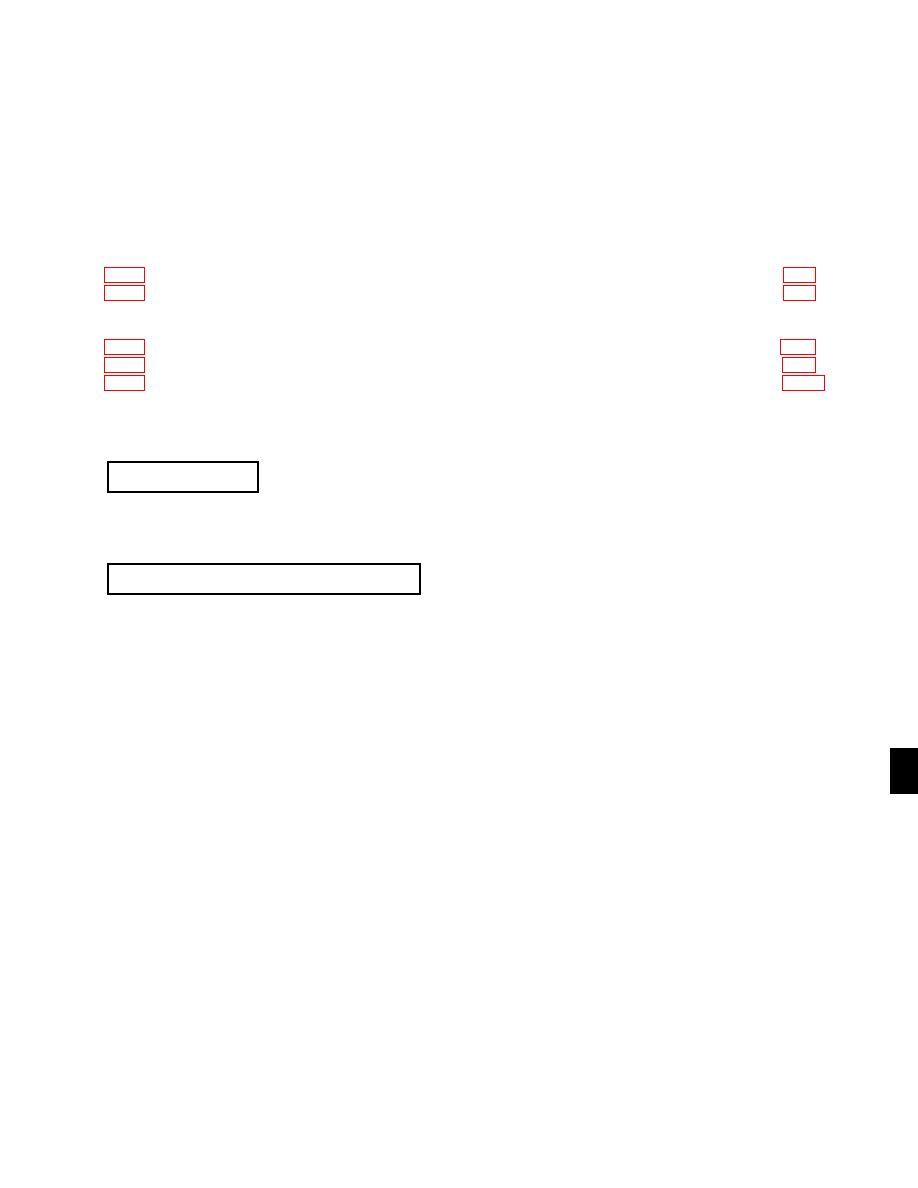 |
|||
|
|
|||
|
Page Title:
Chapter 10. BRAKE SYSTEM MAINTENANCE |
|
||
| ||||||||||
|
|
 TM 10-3930-673-34
10
BRAKE SYSTEM MAINTENANCE
Para
Contents
Page
Section I. Description and Data
General . . . . . . . . . . . . . . . . . . . . . . . . . . . . . . . . . . . . . . . . . . . . . . . . . . . . . . . . . . . . . . . . . . 10-1
Principles of Operation . . . . . . . . . . . . . . . . . . . . . . . . . . . . . . . . . . . . . . . . . . . . . . . . . . . . . . 10-1
Section II. Brake System Maintenance Procedures
Disc Brake Assembly Replacement/Repair . . . . . . . . . . . . . . . . . . . . . . . . . . . . . . . . . . . . . . 10-3
Brake Control Valve Repair . . . . . . . . . . . . . . . . . . . . . . . . . . . . . . . . . . . . . . . . . . . . . . . . . . 10-9
Parking Brake Seals Replacement . . . . . . . . . . . . . . . . . . . . . . . . . . . . . . . . . . . . . . . . . . . . . 10-16
Section I.
DESCRIPTION AND DATA
This chapter covers maintenance procedures for the service brake system components, as well as principles of
operation.
10-2. PRINCIPLES OF OPERATION
a. General. Hydraulic fluid to operate the service brakes is drawn from the main hydraulic reservoir by
the small (1.48 cu. in. [0.024 lt]) section (1) of the dual gear pump. The frame tilt circuit is supplied by the
same pump section. Protection for the circuit is provided by relief valve (2), which is designed to bypass when
circuit pressure reaches 1750 psi (12066.25 kPa).
Pressure to operate the brakes is supplied by accumulator (3). Pump (1) flow is used in the brake circuit solely
to maintain the accumulator charge. Pressure switch (4) is used to monitor brake circuit operating pressure
and turns on the LOW BRAKE PRESSURE warning light in the cab if pressure drops to below approximately
650 psi (4481.75 kPa).
b. Accumulator Charging Cycle. Force to operate the service brakes is produced by the precharge
pressure in the accumulator (3). When the brake foot pedal is depressed, a path is completed from
accumulator (3) through ball valve (5) to wheel brakes (6). Pressure exerted by the accumulator is applied
equally to the cylinders of all four wheel brakes (6). The path between accumulator (5) and pump (1) is
blocked at this time by check valve (7), which is seated by accumulator pressure. Check valve (7) will remain
seated as long as accumulator pressure is higher than pump pressure. Charging valve (8) will then be in the
position shown, and all flow from pump (1) will pass through charging valve (8) and the frame tilt valve (not
shown) back to the reservoir. When, during brake operation, accumulator pressure drops below a preset
pressure established by design of pilot valve (9), charging valve (8) must be shifted to permit recharging of the
accumulator. When accumulator pressure reaches its lower limit, pilot spring (10) will force the spool in pilot
valve (9) upward (as shown). Accumulator pressure is then applied through ports in pilot valve (9) to the left
end of the spool in charging valve (8), shifting the spool to the right (as shown). Since pump pressure is higher
than accumulator pressure at this time, check valve (7) will be unseated and pump flow is permitted through
the charging valve ports and check valve (7) to the bottom of accumulator (3). Orifice (11) in the check valve
seat restricts the rate of flow to accumulator (3). Orifice (12) in charging valve (8) limits flow to frame tilt
circuit while charging valve (8) is shifted to allow accumulator recharging.
|
|
Privacy Statement - Press Release - Copyright Information. - Contact Us |